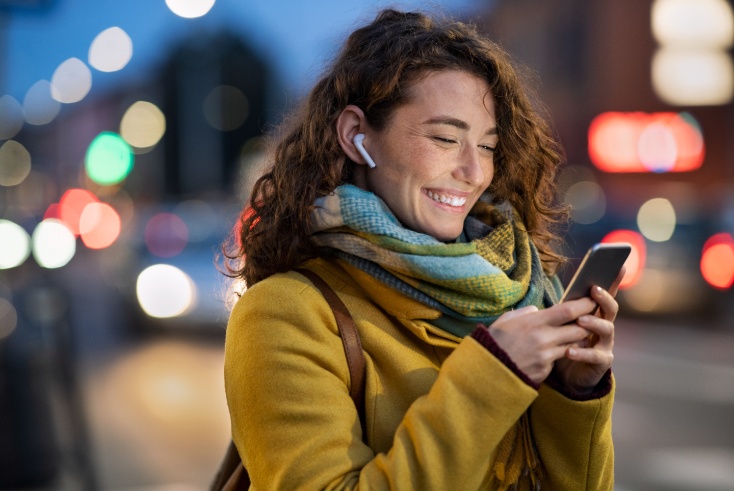Commercial media’s share of consumers’ media time has declined slightly over 10 years but has recovered from the pandemic low. While this can be partly attributed to the growth in subscription VOD (SVOD) services, their impact is “less significant than previously imagined”.
That is one finding from the IPA in Making Sense — The Commercial Media Landscape. The report also found that SVOD now has a larger weekly reach than cinema.
Overall, the results reveal a still strong, but increasingly fragmented, video landscape.
According to the study, the top five commercial media properties by weekly reach for UK adults were: ITV/STV (51%), Facebook (48%), YouTube (45%), Channel 4 (44%) and Instagram (34%).
Meanwhile, no single commercial media channel apart from OOH reaches more than 90% of UK adults per week.
A return to normal… with caveats
In general, the IPA found that UK adults’ media consumption has broadly slipped back into pre-pandemic habits.
Following disruption of habits amid pandemic lockdowns, people now once again primarily watch video in the evening; audio listening still peaks in the morning; and OOH builds as the day progresses and tails off in the evening.
However, the channels that comprise “video” or “audio” have shifted to include greater use of digital channels, including on-demand media such as streaming TV, music and podcasts.
Simon Frazier, author of Making Sense and head of IPA TouchPoints marketing and data innovation, said: “We are seeing that overall patterns of commercial media consumption have reverted to pre-pandemic, established patterns. However, the methods of delivering commercial media are clearly evolving in line with technological advancements and are therefore changing the landscape for planners considerably.”
100 years of doing it wrong — and how to do it right
Importantly, adults now spend 17 fewer minutes per day with curated commercial media than they did in 2015. The share of time spent with commercial media has decreased by two percentage points since 2015 and now sits at 64%. However, this is higher than it was amid the 2020 lockdowns, when share of time spent with commercial media hit a low of 60%.
The shift has been most prominent among 16-34s, who in 2015 spent 76% of media time with commercial channels and today spend only 67%.
This can largely be attributed to the increased amount of time spent with SVOD services, which offer plans without advertising. However, the report argued that “the impact of subscription media is less significant than previously imagined”.
Frazier added: “While there is a decrease in both share of time and time spent with curated commercial media — I suspect mainly down to the decrease in linear broadcast TV viewing — it is perhaps surprising this isn’t greater, given the perceived disruptive growth of subscription-based services, which were formerly seen as taking commercial media share.
“And it may also point to the impact that certain SVOD offerings now incorporating advertising into their subscription models is having.”
Continued growth in digital, in particular smartphones
When it comes to digital channels, adults’ curated commercial media time share has shifted from 42% in 2015 to 59% in 2024.
This trend is predictably more notable among younger individuals. Among 16-34s, 79% of commercial media time is spent on digital channels today, compared with 59% in 2015.
The digital shift has occurred as time spent with smartphones has continued to increase post-lockdown. Total curated commercial media time spent on smartphones grew 12 percentage points from 2015 and two percentage points since lockdown to reach 32%.
Among 16-34s, 48% of curated commercial media time is now spent on smartphones.
Even for over-55s, 16% of curated commercial media time is now on smartphones — the second-largest share of any media channel, behind TV.
“Media investment will have to work harder to cut through, as more media is being used concurrently rather than in isolation and attention is becoming more stretched as a commodity — fuelled by the ever-increasing smartphone take-up,” Frazier continued.
“More than ever, a greater focus is needed on diverse media plans to maximise overall campaign performance as media opportunities shift.”
AMA: Ask media experts anything!
Adwanted UK is the trusted delivery partner for three essential services which deliver accountability, standardisation, and audience data for the out-of-home industry.
Playout is Outsmart’s new system to centralise and standardise playout reporting data across all outdoor media owners in the UK.
SPACE is the industry’s comprehensive inventory database delivered through a collaboration between IPAO and Outsmart.
The RouteAPI is a SaaS solution which delivers the ooh industry’s audience data quickly and simply into clients’ systems.
Contact us for more information on SPACE, J-ET, Audiotrack or our data engines.





